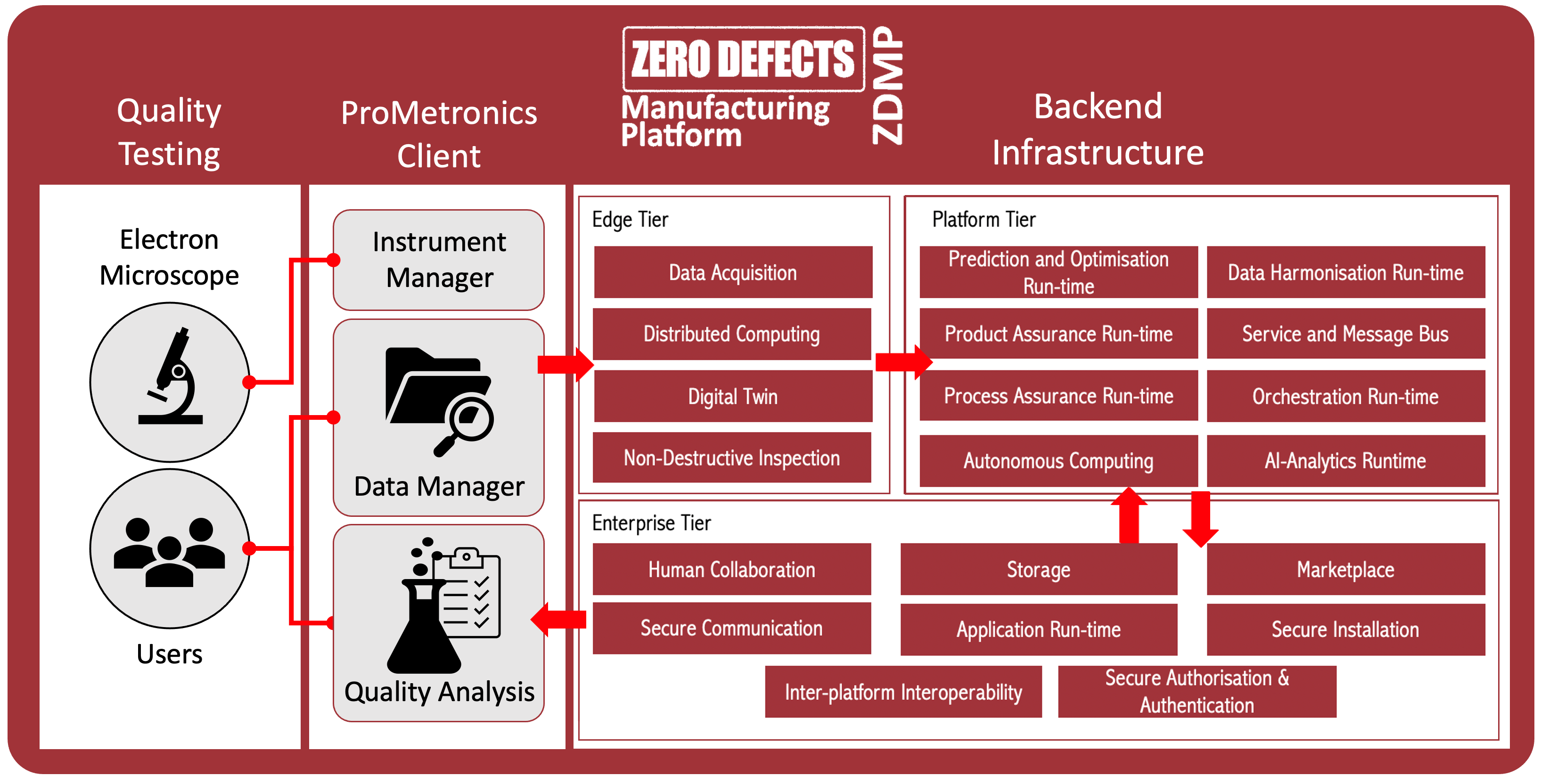Software features announced
ProMetronics UG announces a first sketch for the features of the new quality solution
Operating Logic
The Software package built by ProMetronics supports a standardised examination method based on electron microscopy. Companies may already use such electron microscopy in their quality control process – or might also choose to acquire new instruments.
The software solution will enable quality departments to interpret the data generated by their own instruments: Data storage and analysis are performed in house, safely operating on the local machine of the customer.
The analysis procedure is facilitated through a subscription to machine learning methods validated and released every year by the independent Medical Materials Research Institute (MMRI).
Software architecture
The software package has an architecture based on the ZDMP backend infrastructure. The user interface is realised in a Client-Module that is operating on top of that backend and utilising the components developed and provided by the makers of ZDMP. The whole package is installed on the local machine of the user.
ProMetronics is now developing the backend, which will cover all functions necessary to create unambiguous surface analysis of implants. Features start from automated data importing via the instrument manager which will automatically recognise which electron microscope is operating. Users have to authenticate in a double opt in process, so that all data imported to the system have granted ownership and rights. All data are organised in a file management system that will provide clear overview and archiving of daily quality tests.
Quality analysis is achieved by using dedicated machine learning models that are being trained by the data scientists of ProMetronics with the support of the ai analytics designer component that is part of the ZDMP technology. The training and verification of these models is planned to be performed every year anew, when the MMRI creates new market screenings and finds new types of contaminants on all the implants out there in the market. By constantly keeping up the work on the data science process, the analysis models will be kept up to date for unambiguous data interpretation. License owners don’t need to deal with algorithms or any other data science issue – they just download the latest models via subscription and click the analysis button to get a qualified report.

